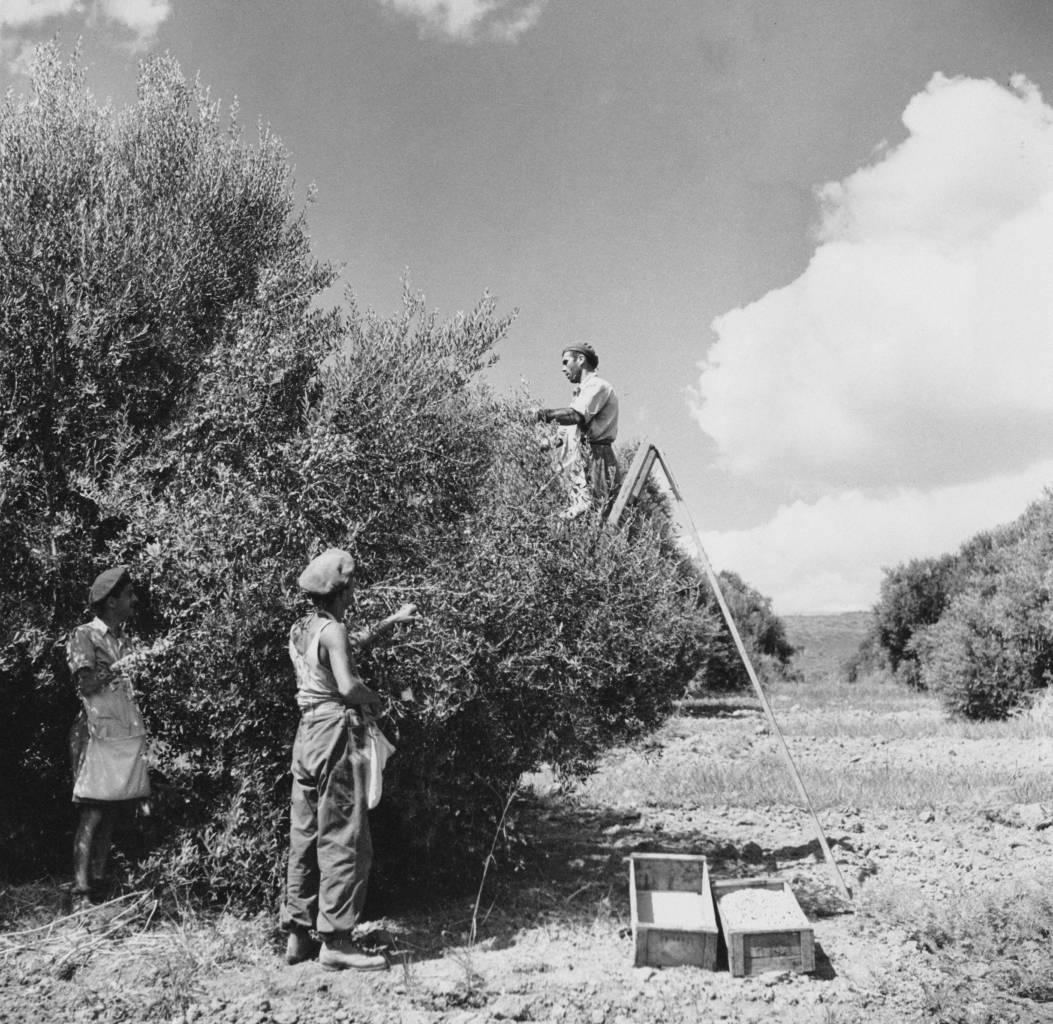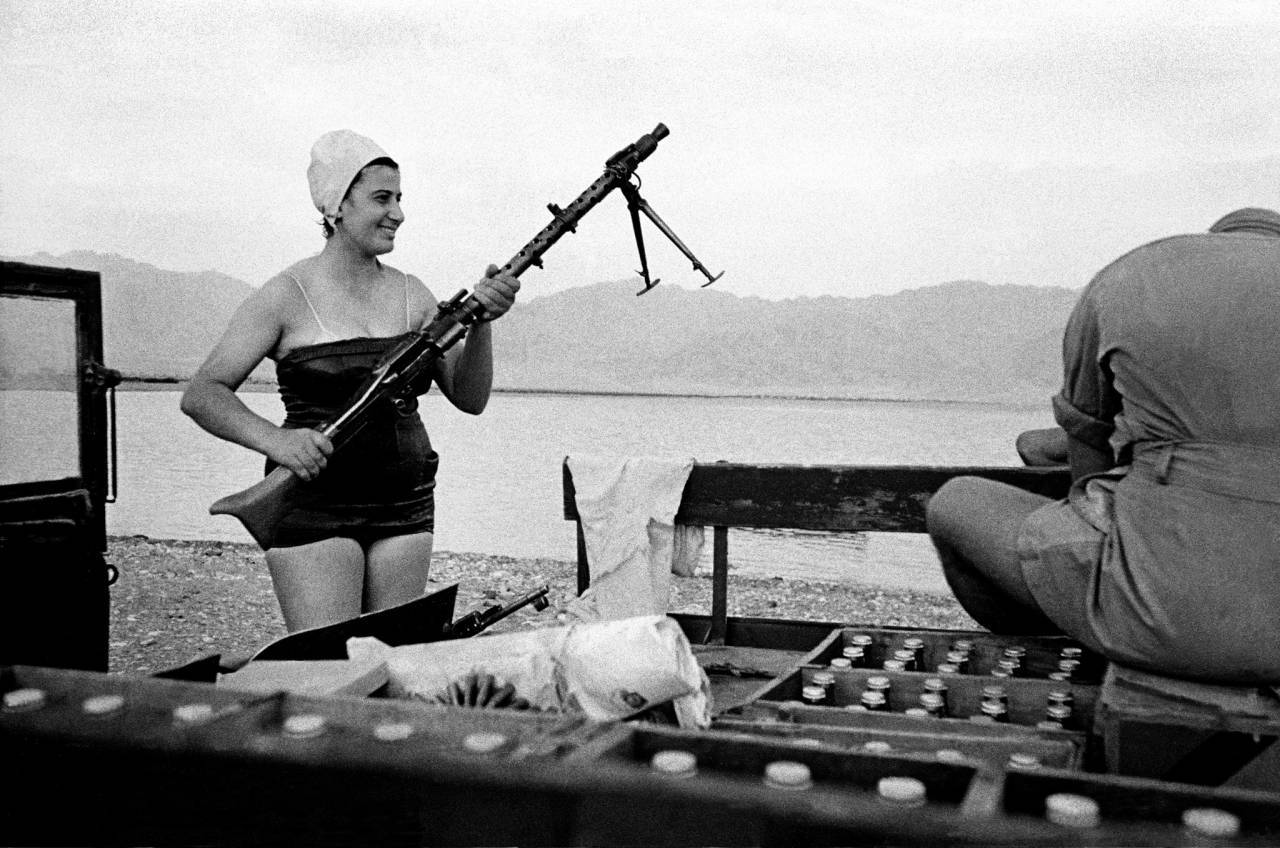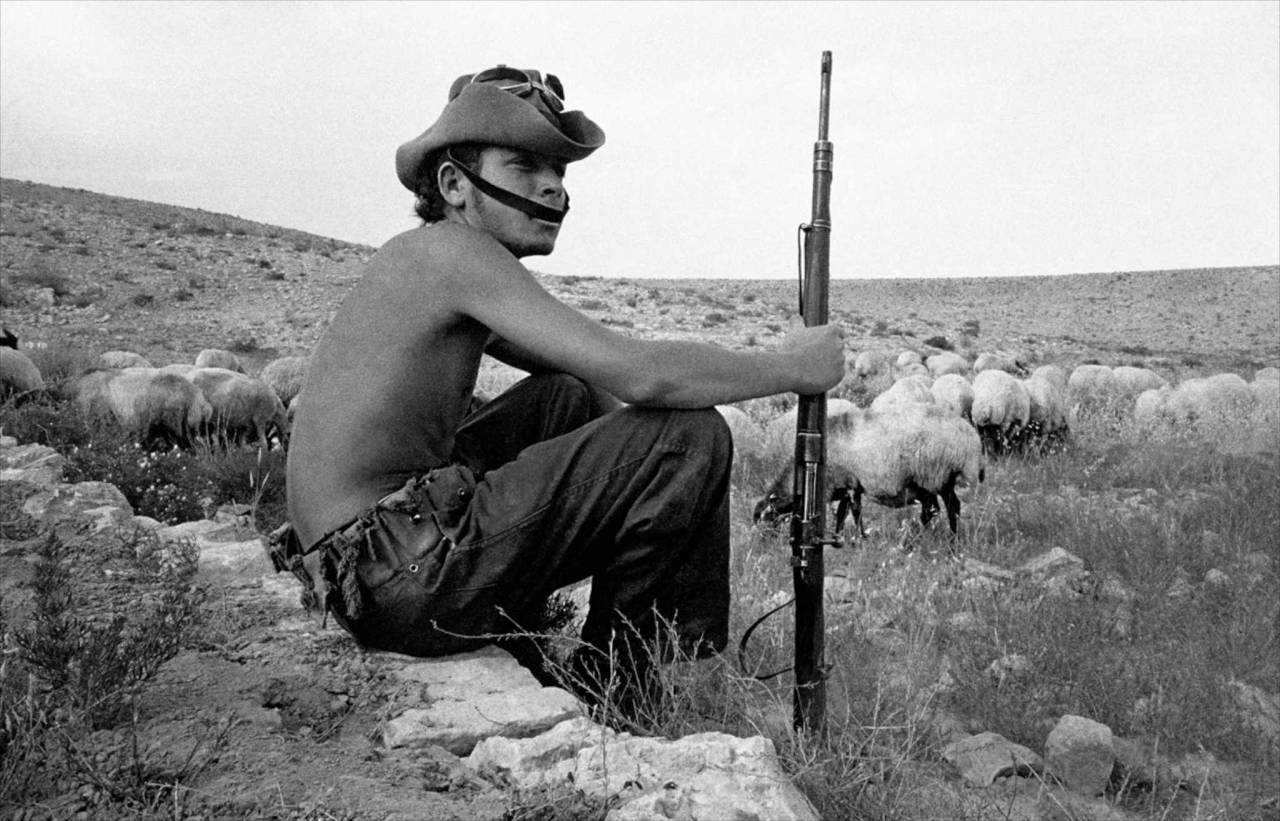“Jackson Bentley: What is it, Major Lawrence, that attracts you personally to the desert? T.E. Lawrence: It’s clean” – Lawrence of Arabia (1962)
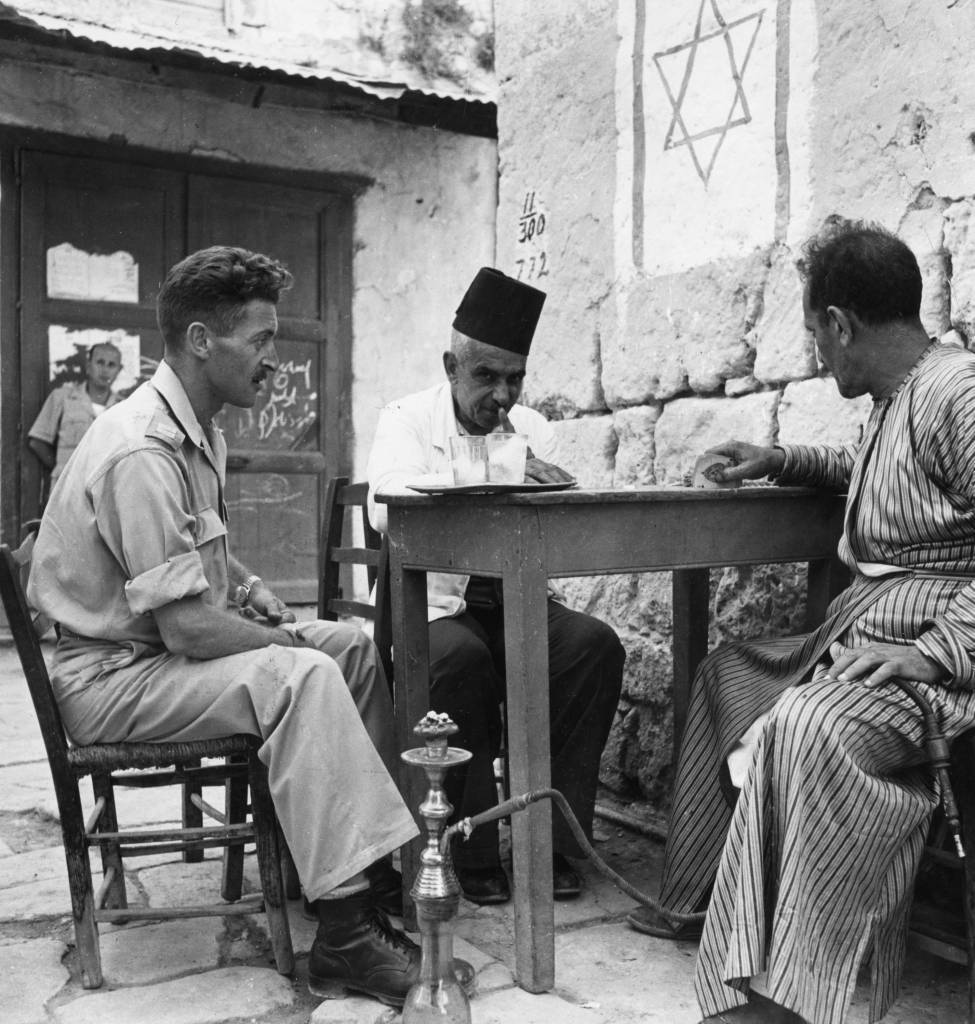
circa 1937: A Jewish soldier and two Arab tradesmen enjoy a game of cards in the town of Madjdal at the entrance to the Negev. On the wall above them is painted the Star of David and one of the Arabs is holding a hookah. (Photo by George Pickow/Three Lions/Getty Images)
The Negev desert has been home to nomads, Canaanites, Philistines, Edomites, Byzantines, Nabateans, Ottomans and Israelis.
In 1946 and 1947, David Ben-Gurion was eager for the Negev be part of the new state of Israel. Ben -Gurion, Israel’s first prime minister, saw the dry, sparsely populated land as Israel’s frontier. But how could he ensure the diplomats viewed it as part of Israel?
Boeliem reports:
…after sunset following the fast of Yom Kippur, 6 October 1946, eleven groups of pioneers reached their eleven destinations; eleven settlements were established simultaneously on this night and the map of Jewish settlement was changed forever.
These eleven settlements came to be known as the 11 “Points” of the Negev and comprised Kedma and Gal-On in the north east (close to Kfar Menachem and Gat); Shuval and Mishmar HaNegev, a little further south but still to the east; Nevatim and Hatzerim, near Beer Sheva, and Urim to the west, near Gevulot and, finally, the four “Points”: Tekuma, Be’eri, Kfar Darom and Nirim, bordering the Gaza Strip…
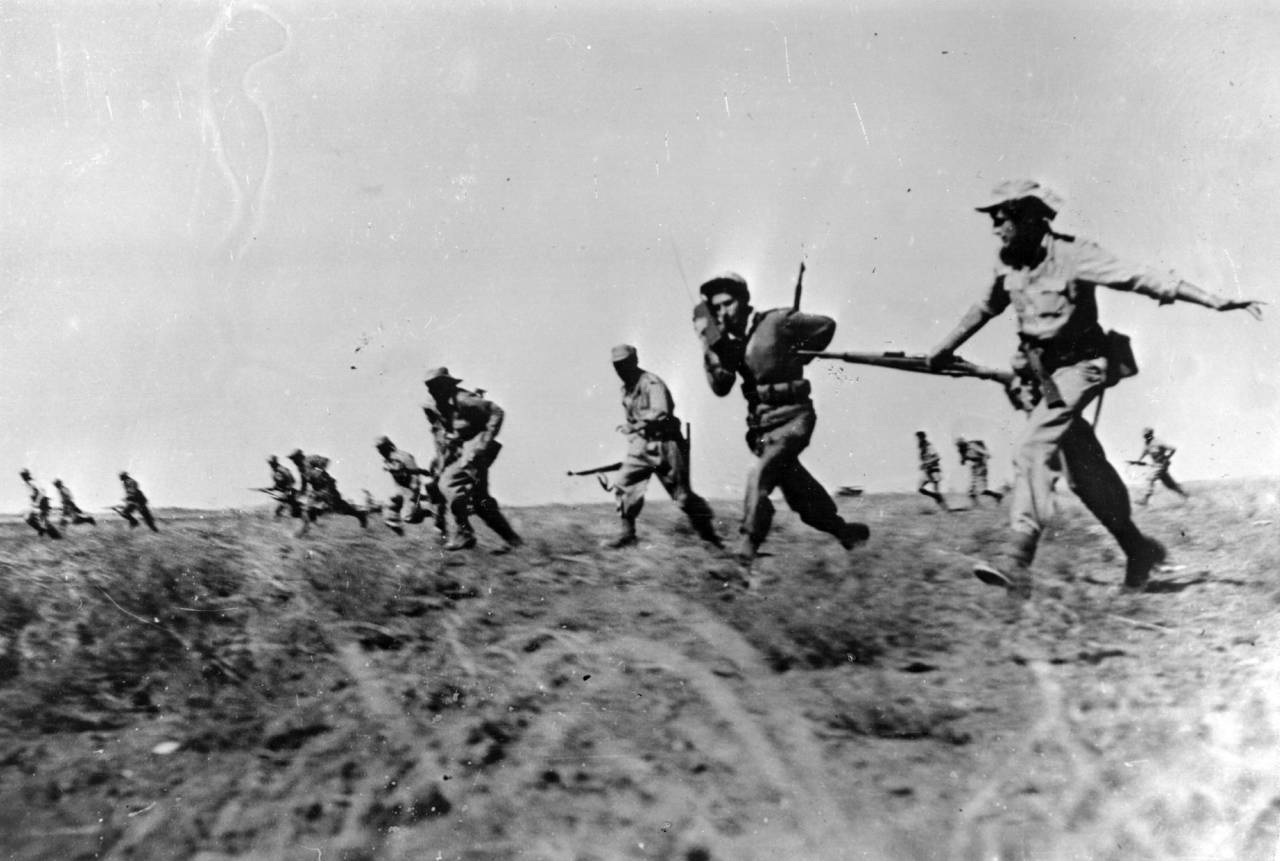
Israeli infantry making a full assault on Egyptian forces in the Negev area of Israel during the War of Independence. 1948
The Jerusalem Post returns:
…their secret operation in large letters on the front page: “They reclaimed the Negev”…The population of the Negev at the time was about 50,000, mostly Beduin, and the Morrison-Grady plan of that year to resolve the issue of Palestine allocated the northern Negev to the Arabs, while the southern Negev would remain part of the British Mandate. The heads of the Yishuv decided they must do something to change the political reality on the ground. After different plots of land throughout the Negev were painstakingly purchased privately by Jews and by the Jewish National Fund, an operation was planned by the Jewish Agency to settle those patches, thereby raising the chances the Negev would be included within the borders of the future Jewish state….
Hours after the makeshift huts had been erected and covered with roofs, British officers appeared, recalls Yossi Tzur, one of the first residents of Kibbutz Shoval, a few kilometers away from Mishmar Hanegev. They looked around, he says, seemingly mesmerized by the sudden presence of the settlements, and continued on their way. None of the settlements was ever removed by the British, and today all of them but one are still standing – during the disengagement from the Gaza Strip in August 2005, Kfar Darom was evacuated by order of the Israeli government.
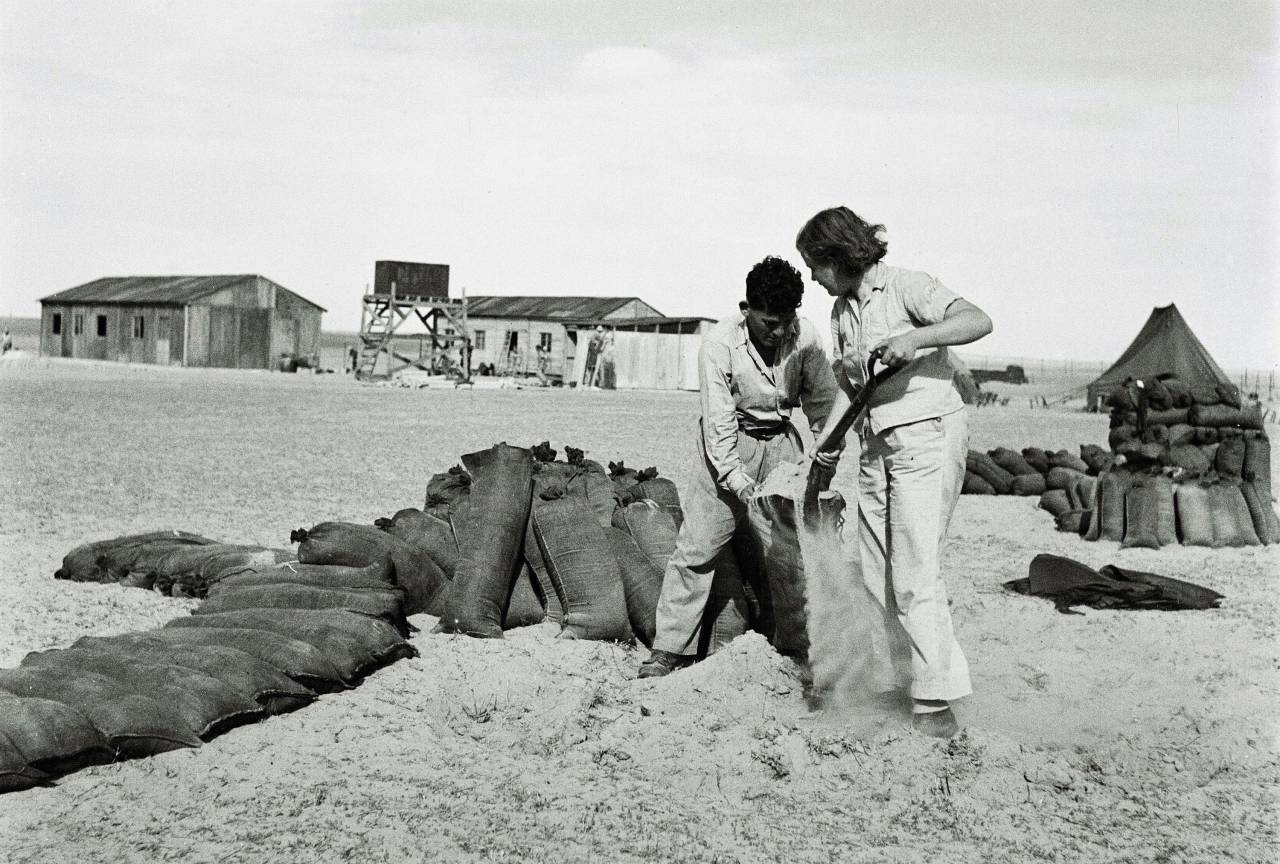
In this handout from the GPO, Jewish pioneering settler fill sandbags to protect their cooperative farming community February 1, 1947 of Moshav Mivtahim in the Western Negev Desert, during the British Mandate of Palestine, in what would later become the State of Israel. (Photo by Zoltan Kluger/GPO via Getty Images)
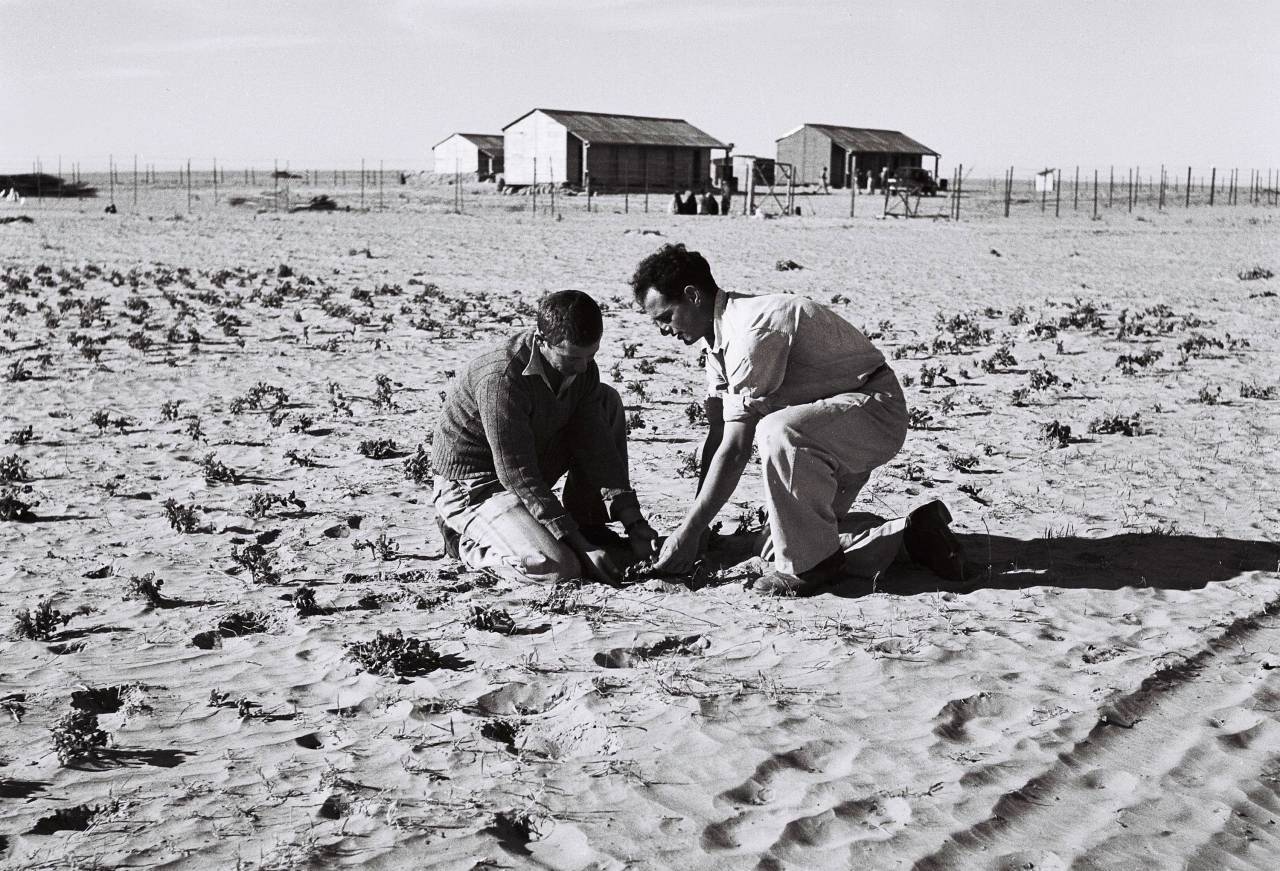
Jewish pioneering settlers work in a potato field near their cooperative farming community Septmber 30, 1946 of Kibbutz Urim in the Negev Desert
Israel’s Documents recalls:
In 1954 he [Ben-Gurion] resigned his post as prime minister and went to join the newly founded kibbutz of Sdeh Boker deep in the Negev, to prove that settling the Negev was more important even than leading the government. He returned the following year, though when he finally did retire, it was back to Sdeh Boker.
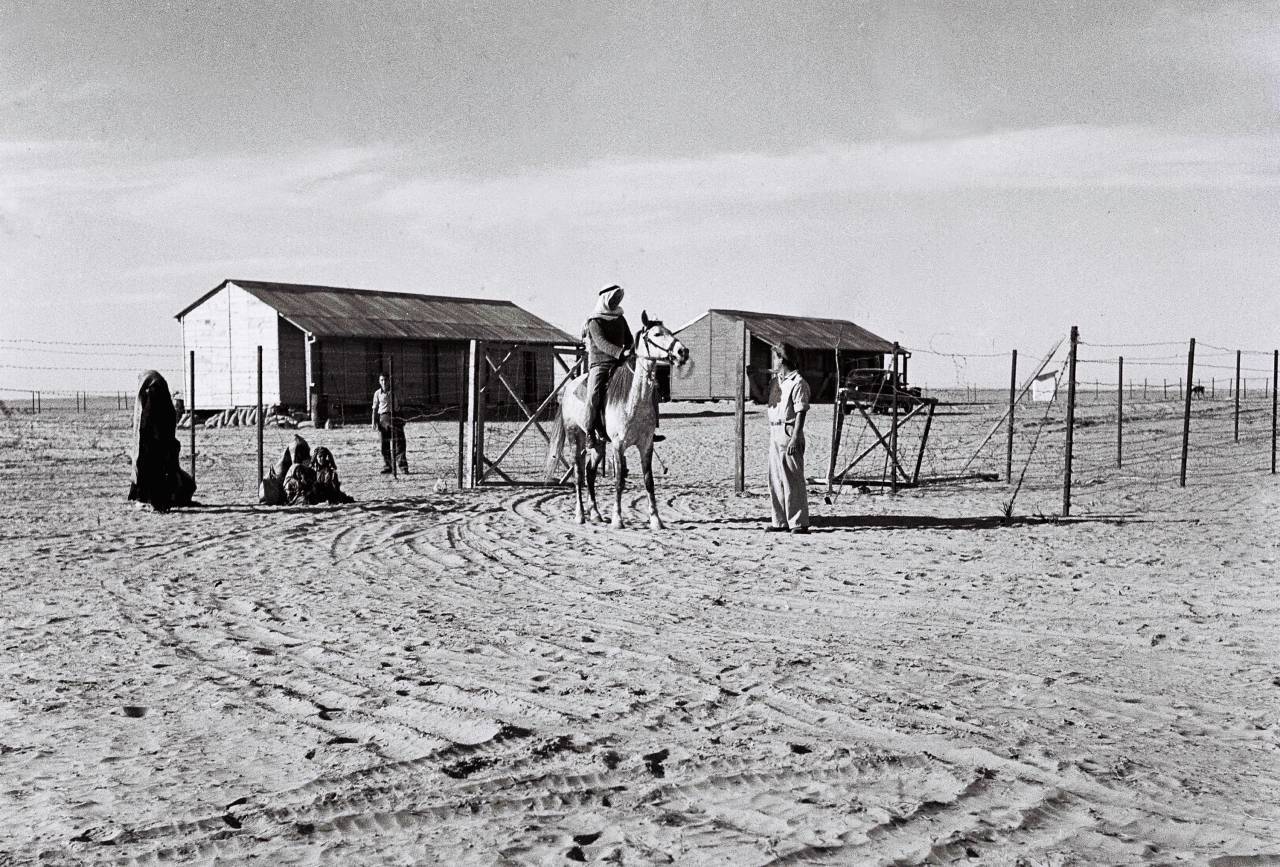
Bedouin Arab family speaks with Jewish pioneering settlers at the gate of their cooperative farming community Septmber 30, 1946 of Kibbutz Urim in the Negev Desert
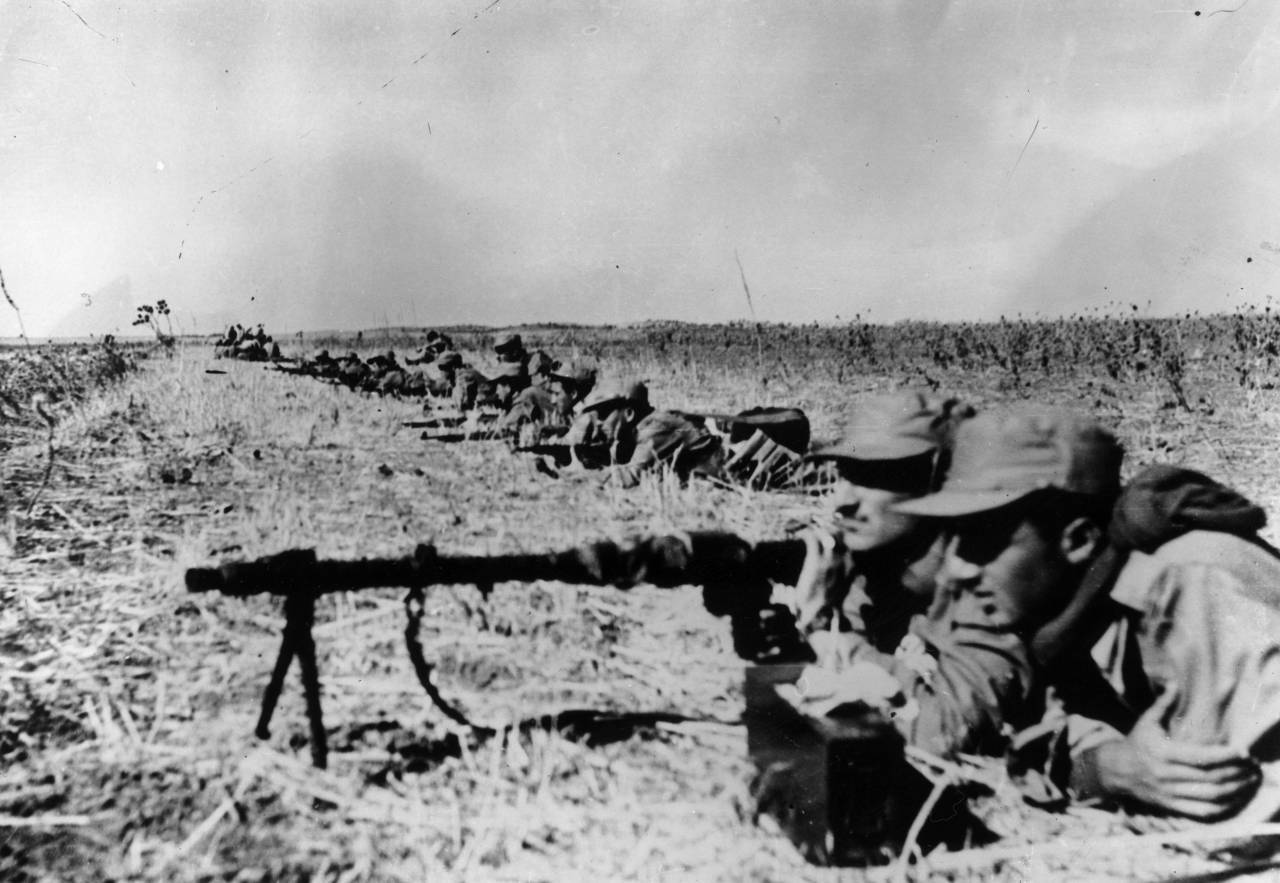
23rd October 1948: Israeli infantry man their machine guns and rifles before attacking the Egyptian Army and making a breakthrough on the Negev.
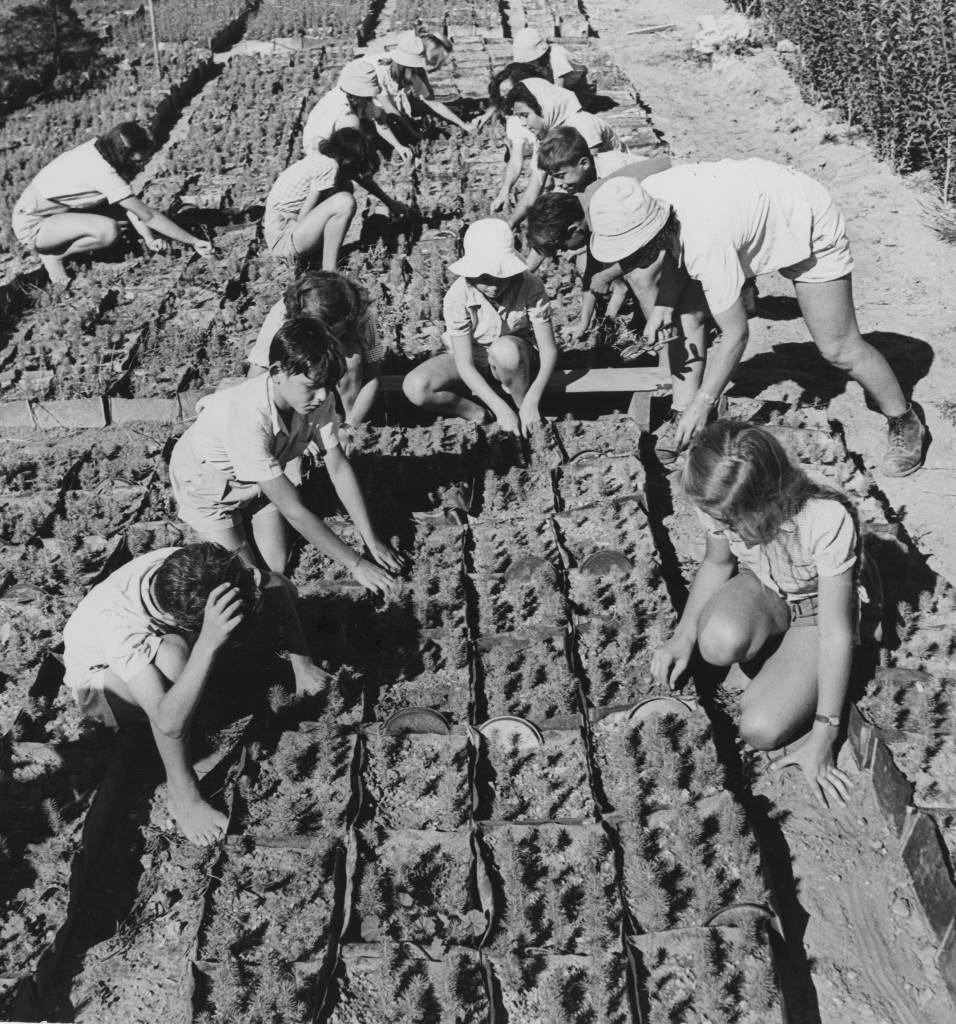
City children helping to produce seedlings, which will later be planted in the Negev Desert, Israel, circa 1950.
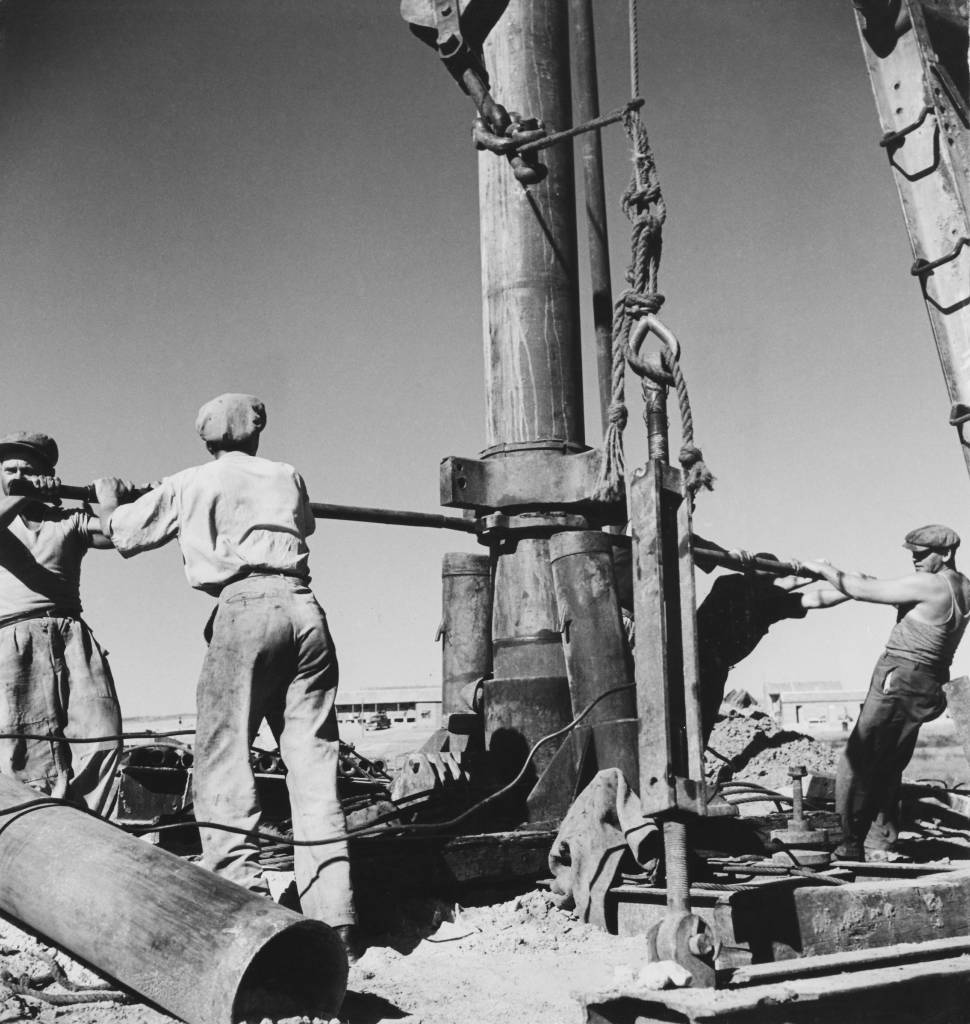
A group of men drilling for water at the Mefalsim kibbutz in the Northern Negev region, Israel, circa 1950. The kibbutz was founded by Jewish immigrants from South America.
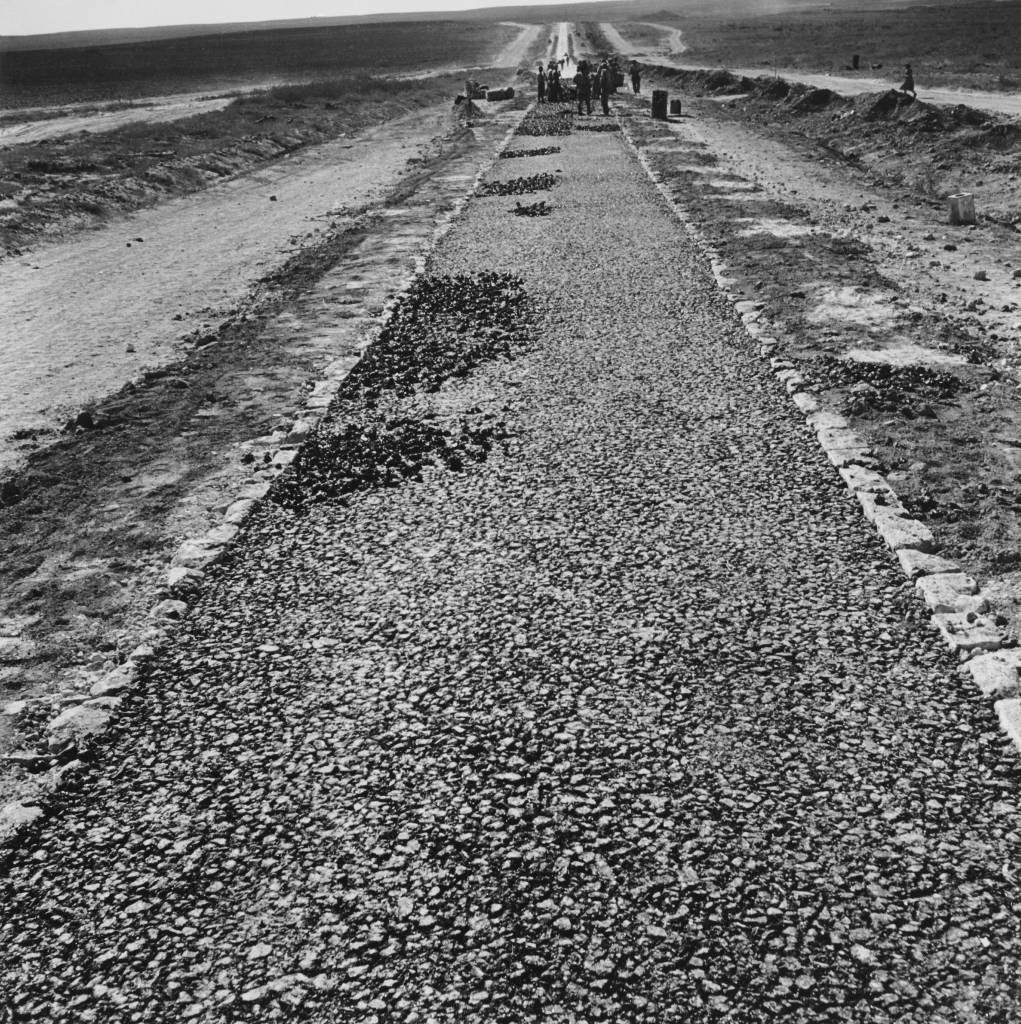
A new road under construction in the Negev Desert, Israel, circa 1950. Roads are being built in preparation for new settlement in the region.

circa 1955: A Moroccan immigrant now living in Beersheba, Israel, loads potash into a railway car. (Photo by Evans/Three Lions/Getty Images)
Would you like to support Flashbak?
Please consider making a donation to our site. We don't want to rely on ads to bring you the best of visual culture. You can also support us by signing up to our Mailing List. And you can also follow us on Facebook, Instagram and Twitter. For great art and culture delivered to your door, visit our shop.
